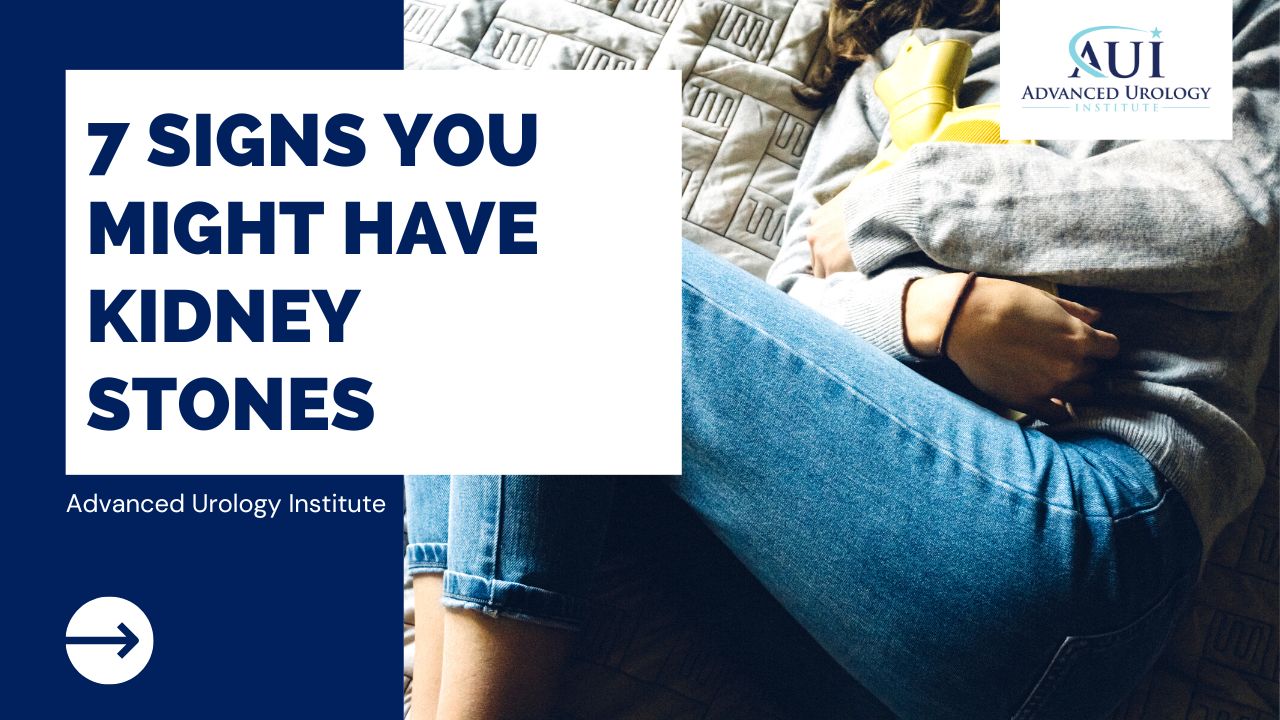7 Signs You Might Have Kidney Stones
 An elevated amount of salts and minerals in urine can cause kidney stones. Also called renal calculi, kidney stones are hard deposits made of crystal-forming substances such as calcium, uric acid and oxalate, found in urine. The stones vary in size, with some being too small, some a few inches across, and others large enough to take up an entire kidney.
An elevated amount of salts and minerals in urine can cause kidney stones. Also called renal calculi, kidney stones are hard deposits made of crystal-forming substances such as calcium, uric acid and oxalate, found in urine. The stones vary in size, with some being too small, some a few inches across, and others large enough to take up an entire kidney.
For smaller renal stones, there are usually no associated signs. The stones can travel from the kidneys through ureters, bladder and urethra without causing any problems. And drinking plenty of water really helps in passing these stones.
But for larger kidney stones, signs appear as the stones move from one part of the urinary tract to another. An example is when a moderate or large stone moves from the kidney to the ureter. It immediately causes obstruction and produces agonizing pain. Such stones require a procedure, such as shock wave lithotripsy, to break up and remove them.
So what are the signs that you might have kidney stones?
- Pain in your lower back, side, or belly
Kidney stones produce one of the most severe types of pain—comparable only to getting stabbed by a knife or pain during childbirth. The pain tends to begin when the stone moves into the ureter, causing a blockage and pressure buildup in the kidney. This pressure activates nerve fibers to send pain signals to the brain.
The pain starts suddenly and changes location and intensity as the stone moves. It also comes and goes in waves, with each wave lasting a few minutes, disappearing, and then coming back. The pain usually occurs along the side and back, below the ribs, but can radiate to the belly and groin area as the stone moves down the urinary tract.
- Tossing and turning
The sudden episodes of kidney stone pain last 20-60 minutes. But they are so severe that they don’t allow you to sit still. So you’re forced to move around, toss and turn, in order to find a more comfortable position.
- Burning sensation during urination
When a kidney stone reaches the junction between the ureter and bladder, it causes sharp or burning pain during urination. It is quite easy to mistake the stone for a urinary tract infection (UTI). Of course, it is also common to have an infection alongside a kidney stone.
Apart from pain during urination, kidney stones can cause urinary frequency and urgency as they pass to the lower part of the urinary tract. That’s because a stone irritates the walls of the bladder and causes contraction, resulting in the urge to pass urine. You may find yourself running to the bathroom frequently or feeling the urge to go throughout the day and night.
- Nausea and vomiting
Kidney stones can cause obstruction of urine flow. This makes urine to back up, stretching or swelling the kidneys. Eventually, this may lead to nausea and vomiting.
Also, due to the excruciating pain associated with kidney stones, you may experience nausea and vomiting as one of the responses.
Equally, due to the sharing of nerve connections between the kidneys and the gastrointestinal tract, the presence of stones in the urinary tract disrupts nerves in the intestinal tract, resulting in stomach upset.
- Blood in urine
Kidney stones irritate the delicate tissues that line the urinary tract, including inside the ureter. As a result, there may be significant, microscopic, or moderate bleeding, which results in blood in urine (hematuria).
So as a sign of kidney stones, your urine may look grossly red, pink, or brown. You may also have blood in urine, but in quantities that are too small to notice with the naked eye. In that case, a urine test may be necessary to detect the urine.
- Fever and chills
Though fever is not a common sign of kidney stones, it may occur when the stones block urine flow or if the stones cause conditions that allow for an infection. Like fever, chills tend to occur due to an infection that arises as a complication of kidney stones.
When they occur, fever and chills are usually a medical emergency. And so, the obstruction should immediately be dealt with through a procedure such as shock wave lithotripsy to enable antibiotics to pass through the obstructed area.
- Smelly or cloudy urine
Urine that is healthy tends to be clear and without a strong odor, but turbid, smelly urine might indicate an infection. So, while foul-smelling or cloudy urine does not directly indicate kidney stones, it may point towards an infection that arises as a complication of renal stones.
Generally, more than 16-percent of people with acute kidney stones tend to have UTIs. And whether it occurs with or without fever, the combined presence of a UTI and kidney stones is a surgical emergency.
When should you see a doctor?
You should see your doctor when you have agonizing pain, nausea, vomiting, bloody, turbid or smelly urine, fever or chills. It is advisable to seek immediate medical attention when you have pain that is so severe that you can’t get comfortable. For more information on kidney stone treatment, visit the site “Advanced Urology Institute.”

